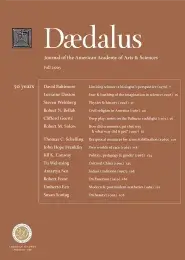How did economics get that way & what way did it get? (1997)
My exposure to economics as a discipline began in September 1940 when I enrolled as a freshman in the elementary economics course at Harvard College. I will try in this essay to make sense of the evolution of economics over a span of more than fifty years.
An analogy that comes to mind is from The Boston Globe. The Sunday edition occasionally publishes pairs of photographs of urban landscapes. They are taken from the same spot, looking in the same direction, but are at least thirty, forty, or fifty years apart. One shows a corner of the city as it looked then and the other as it looks now. Some buildings have disappeared, some new ones have been built, and some of the old ones are still there but with altered facades. This description is also true of the landscape and structure of economics, and I would like to provide a few then-and-now snapshots. The difference, however, is that with economics something more is called for; the pictures have to be connected. I would like to tell a story about how and why the architecture of economics changed. It will be a sort of Whig history but without the smugness.
There were three textbooks that were used in the 1940 economics course at Harvard. One was a standard principles text by Frederic Garver and Alvin Hansen. Hansen had been at Minnesota with Garver but by 1940 was a professor at Harvard and–although we freshmen had no inkling–the leading figure in bringing the ideas of John Maynard Keynes’s General Theory of Employment, Interest and Money1 into American economics. The second text was a large introductory book called Modern Economic Society by Sumner Slichter,2 also a member of the Harvard faculty and usually referred to as the dean of American labor economists. The book was more about economic institutions and their functioning than about theory. The third text was a little green volume by Luthringer, Chandler, and Cline about money and banking, one of a series of little green books. (Lester Chandler of Princeton was the only one of the authors whose name we ever heard again.) It was a pretty boring text, as I remember, but fortunately we only had to read bits of it. This is actually an important point, and I will come back to it later.
. . .
